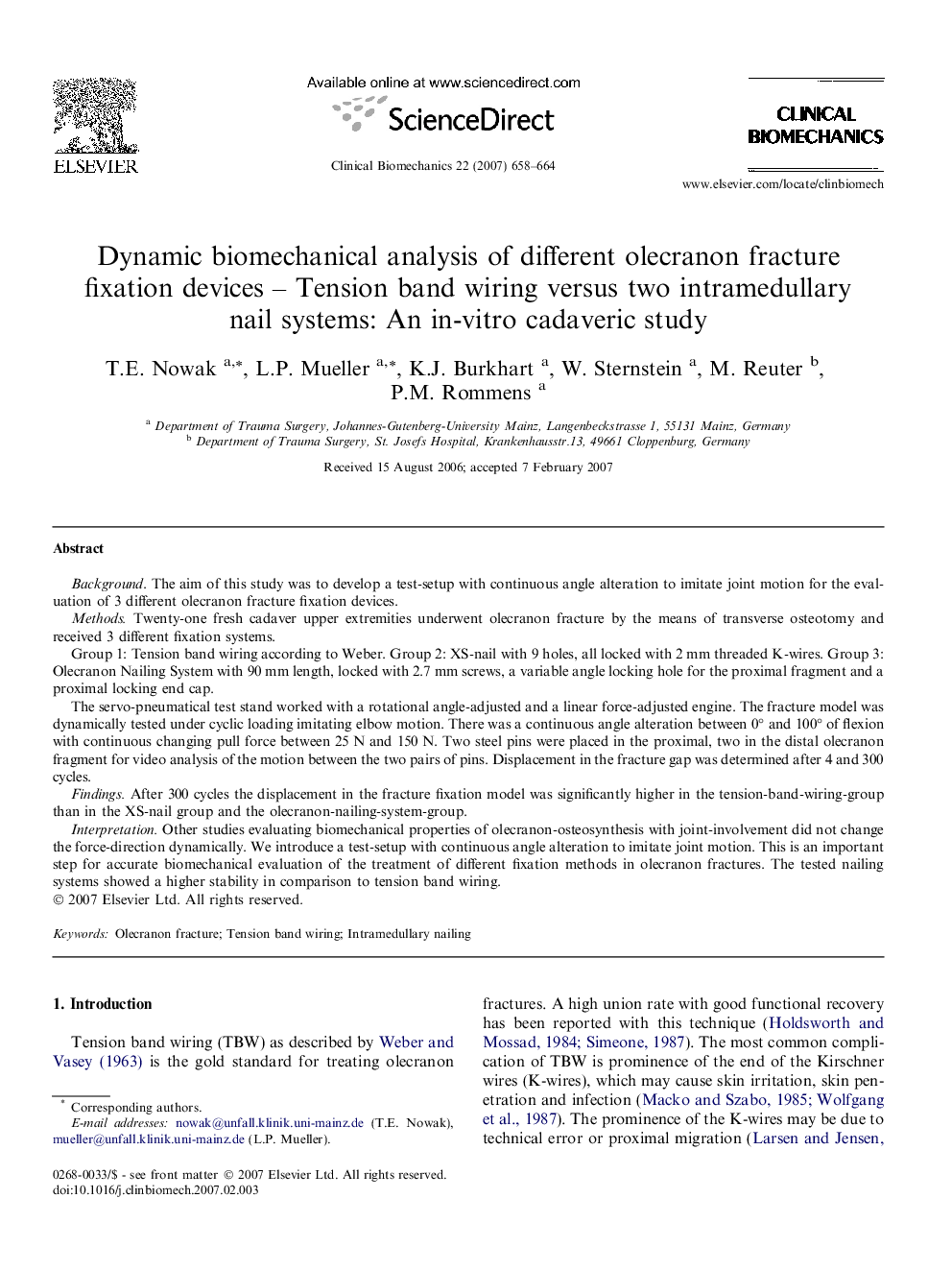| Article ID | Journal | Published Year | Pages | File Type |
|---|---|---|---|---|
| 4051631 | Clinical Biomechanics | 2007 | 7 Pages |
Background. The aim of this study was to develop a test-setup with continuous angle alteration to imitate joint motion for the evaluation of 3 different olecranon fracture fixation devices.Methods. Twenty-one fresh cadaver upper extremities underwent olecranon fracture by the means of transverse osteotomy and received 3 different fixation systems.Group 1: Tension band wiring according to Weber. Group 2: XS-nail with 9 holes, all locked with 2 mm threaded K-wires. Group 3: Olecranon Nailing System with 90 mm length, locked with 2.7 mm screws, a variable angle locking hole for the proximal fragment and a proximal locking end cap.The servo-pneumatical test stand worked with a rotational angle-adjusted and a linear force-adjusted engine. The fracture model was dynamically tested under cyclic loading imitating elbow motion. There was a continuous angle alteration between 0° and 100° of flexion with continuous changing pull force between 25 N and 150 N. Two steel pins were placed in the proximal, two in the distal olecranon fragment for video analysis of the motion between the two pairs of pins. Displacement in the fracture gap was determined after 4 and 300 cycles.Findings. After 300 cycles the displacement in the fracture fixation model was significantly higher in the tension-band-wiring-group than in the XS-nail group and the olecranon-nailing-system-group.Interpretation. Other studies evaluating biomechanical properties of olecranon-osteosynthesis with joint-involvement did not change the force-direction dynamically. We introduce a test-setup with continuous angle alteration to imitate joint motion. This is an important step for accurate biomechanical evaluation of the treatment of different fixation methods in olecranon fractures. The tested nailing systems showed a higher stability in comparison to tension band wiring.
